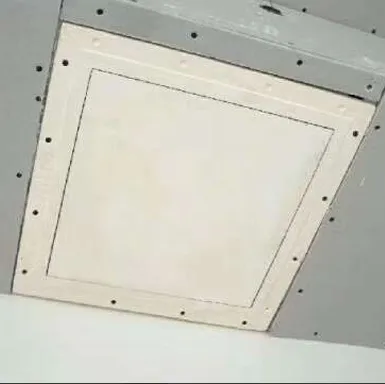Oct . 01, 2024 21:32 Back to list
Understanding Drywall Ceiling Grid Systems for Efficient Interior Design and Installation
Understanding Drywall Ceiling Grid Systems
When it comes to designing and constructing ceilings in both residential and commercial spaces, drywall ceiling grid systems have emerged as a popular choice. These systems provide a versatile and efficient way to create smooth, aesthetically pleasing ceilings while also offering functional benefits.
At the core of a drywall ceiling grid is the grid itself, which is typically made from lightweight metal or plastic. This framework is suspended from the original ceiling using wires or rods, creating a supportive structure for the drywall panels. The primary advantage of using a grid system lies in its ability to conceal structural elements such as beams, pipes, and electrical wiring. By covering these elements, a drywall ceiling grid creates a seamless and polished look.
The installation process begins with measuring the room and determining the layout of the grid. Accurate measurements are crucial to ensure that the ceiling is level and the drywall panels fit correctly. Once the framework is securely in place, drywall sheets are attached to the grid. These sheets can easily be cut to size, allowing for flexibility in design and accommodating rooms of various dimensions.
drywall ceiling grid

One of the major benefits of using a drywall ceiling grid is ease of access. If maintenance or repairs are needed for plumbing, electrical, or HVAC systems, the grid allows for straightforward access to these areas by simply removing specific drywall panels. This feature saves time and money, making it an attractive option for both building owners and contractors.
Moreover, drywall ceilings can be finished in various styles, colors, and textures, enabling homeowners and designers to create a customized look that aligns with the overall aesthetic of the space. From smooth finishes to textured designs, the possibilities are endless.
In terms of sound insulation, drywall ceiling grids can significantly improve acoustic performance. By incorporating soundproofing materials between the grid and drywall, noise levels can be minimized, resulting in a quieter environment—ideal for offices, schools, and residential areas.
Ultimately, drywall ceiling grid systems provide a balanced combination of functionality and design versatility. Whether you're renovating a home or constructing a new commercial building, considering a drywall ceiling grid could enhance both the appearance and usability of your space. With appropriate planning and installation, these systems can serve as a long-lasting solution that meets both aesthetic and practical needs.
-
Durable Ceiling T Grid Systems | Easy InstallationNewsAug.29,2025
-
PVC Gypsum Ceiling: Durable, Laminated Tiles for Modern SpacesNewsAug.28,2025
-
Pvc Gypsum Ceiling Is DurableNewsAug.21,2025
-
Mineral Fiber Board Is DurableNewsAug.21,2025
-
Ceiling Tile Clip Reusable DesignNewsAug.21,2025
-
Ceiling T Grid Modular DesignNewsAug.21,2025







